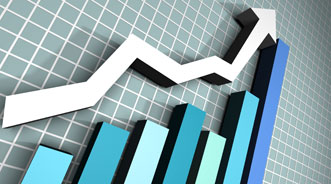KeyBanc Dealer Survey: 4 Factors Push Used Sales, F&I Gross Profit in Q2

As dealers gauged availability of credit for subprime buyers and experienced jumps in F&I gross profit per unit, a total of 60 percent of the respondents who participated in the Monthly Dealer Survey orchestrated by KeyBanc Capital Markets saw an increase in used-vehicle sales volume during the second quarter.
What sparked the positive developments?
The company’s survey determined that stable consumer demand driven by an improving job market, coupled with slightly lower used-vehicles prices — which lowered the cost of used-vehicle inventory — made the market ripe for used-vehicle sales and gross profit per unit.
A good chunk of KeyBanc’s dealer survey respondents (45 percent to be exact) enjoyed a used-sales volume increase in the range up to 5 percent during the second quarter. Meanwhile, another 25 percent of respondents indicated an increase in the range between 5 percent and 10 percent.
KeyBanc mentioned that 7 percent reported an increase of more than 10 percent, and the remaining 23 percent indicated various degrees of year-over-year decline in Q2.
The company also highlighted that the majority of survey respondents (54 percent) reported a year-over-year improvement in gross profit per unit of more than $50 during the second quarter.
Another 29 percent of respondents reported to KeyBanc a relatively flat environment, and the remaining minority (18 percent) noticed a year-over-year decline.
An even stronger sign for dealerships’ success stemmed from the survey results associated with the F&I department.
A total of 69 percent of the respondents saw an increase of $50 or more in F&I gross profit per unit during the second quarter.
Two reasons sparked that climb on a year-over-year basis. Respondents pointed toward increasing credit approval rates and higher product penetration rates, which continued to drive increases in F&I gross profit per unit in line with KeyBanc’s expectations.
Another 19 percent of respondents told KeyBanc that F&I gross profit came in relatively flat year-over-year in the second quarter. The remaining 12 percent sustained a decline of more than $50.
The survey conducted in June also showed 60 percent of respondents believe availability of financing for subprime purchasers would continue to loosen. None of the participants expected financing companies to tighten conditions, while the remaining 40 percent thought the market would remain unchanged.
KeyBanc noted it has been nearly a year since any portion of the survey participants projected a tightening of subprime financing. During 13 of the past 14 months, dealers and other industry observers told KeyBanc that credit would be loosening with the amount of survey respondents believing that sentiment rising as high as 92 percent.
With financing readily available and the success for used-vehicle sales, KeyBanc’s latest survey also touched on the new-vehicle side.
KeyBanc said, “Gross profit per unit survey results remained mixed as expected, but we continue to see signs the overall industry is undergoing stabilization in new-vehicle gross profit per unit as more respondents are indicating relatively flat year-over-year results; dealer stair-step programs remain consistent year-over-year and inventory levels remain well managed by OEMs.”
When turning new models during the second quarter, 39 percent of survey respondents indicated new-vehicle gross profit per unit declined by more than $50 year-over-year, while 38 percent of participants indicated relatively flat results and the remaining 23 percent enjoyed an increase of more than $50.
Finally, KeyBanc’s survey touched on how dealerships are doing in parts and service.
“Consistent efforts to increase customer-pay revenue, increasing units in operation, and an inflection point in warranty revenue continue to drive parts and service sales while allowing dealers to preserve gross profit margins,” KeyBanc said.
The majority of survey respondents (28 percent) posted a parts and service sales increase of more than 10 percent during the second quarter while another 27 percent generated a rise between 5 percent and 10 percent while another 22 percent of stores posted an uptick of 5 percent or less. The remaining 23 percent indicated a decline up 10 percent in parts and service sales.
Despite that general rise in parts and service sales, 65 percent of KeyBanc respondents indicated relatively flat gross profit margin results. A total of 22 percent of participants reported an improvement of more than 100 basis points, and remaining minority (14 percent) reported a year-over-year decline of more than 100 basis points.
To wrap up the analysis, KeyBanc said, “Following our June monthly channel check of auto dealers and industry contacts, we remain bullish on the outlook for automotive retailers.”
Continue the conversation with Auto Remarketing on both LinkedIn and Twitter.

 View The Latest Edition
View The Latest Edition

